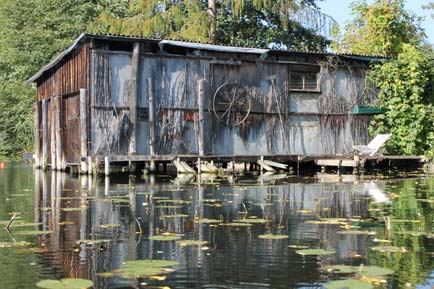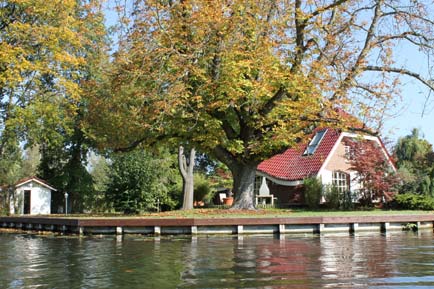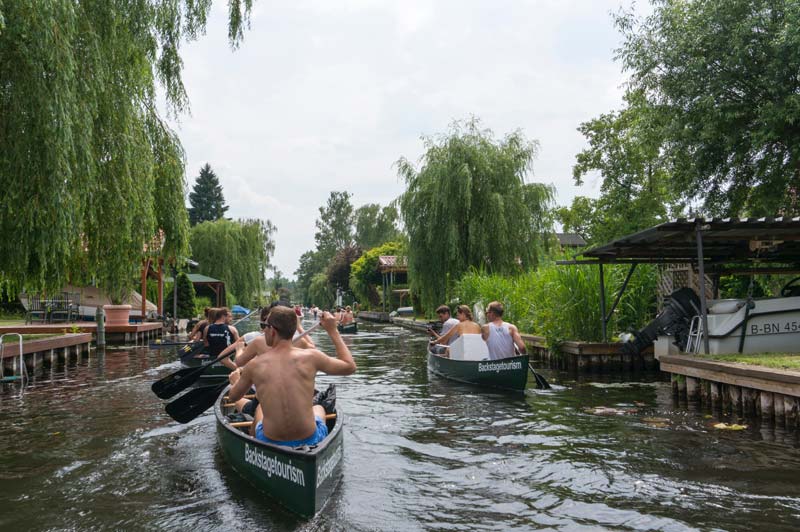Canoe Tour in Berlin New Venice
Berlin’s urban designers have been inspired by many other cities, copied and copied – but that there is a district that, like the lagoon city of Venice, is criss-crossed by a network of canals, that is astounding.
5 kilometers of waterways, 374 sites, all on the banks, each with its own jetty.
Canoe trip on the Grand Canal through Berlin New Venice

We slide with the canoes through the silent canals, weeping willows reach far over the water, duck families paddle out of the bank thicket. From the wide “Canale Grande” we turn into narrower waterways and drive under curved wooden pedestrian bridges. The center of New Venice is dominated by simple wooden cabins with small, creaky jetties. To this day, the inner area of the settlement is considered to be a flood area; in the case of Spree floods, the area would be flooded if necessary, in order to avoid damage in the downstream city center of Berlin.
Here is also the excursion restaurant “New Venice”. One sits in the spacious garden, looks dreamily on the water, time seems to stand here quietly. This also applies to the surprisingly low prices of the restaurant, none of the tasty dishes cost more than 10 euros.
Use plan in Berlin New Venice
On the outskirts of New Venice, the landowners were allowed to build solid houses. In recent years, various imposing villas with column portals, which do not quite fit in with the rest of the rustic idyll, were built here.
The idea for the New Venice settlement came about 100 years ago. Berlin was booming, the population grew rapidly, and so decided the Köpenicker Building Authority to drain the marshy Spreewiesen the former manor Rahnsdorf and develop as a building land.

Instead of temporary drainage ditches permanently usable canals were created, each newly landowner should be able to indulge directly from his plaice from the watersports.
Berlin New Venice had many owners

At the time, such a project was in the social trend. The decades of industrialization had led to unbelievably dense urban development, the soot of factories wafting through the streets.
And so came a contrary development, the so-called life reform movement: Back to nature. There were the so-called “migratory birds” and also the “nudism”, the nude bathing, goes back to this time.
Accordingly, there was a high demand for land in the countryside, right on the water. Even during the development work, the price per square meter rose from 2 to 3.50 Reichsmark.
After the construction of the Berlin Wall in 1961, many West Berliners could no longer reach their summer houses, which are now located in the Russian sector. They were forcibly expropriated and the land handed over to deserving SED party members.
Only after 1989, the DDR political elite gradually disappeared, as the land was returned to the old owners.
Canoeing to the Müggelsee
After the round through the branched canal system of New Venice, our canoe tour leads us on the Müggelspree and on to Rahnsdorf. On the way to the Müggelsee it can happen on weekends that a rowing boat crosses our route. This is Berlin’s only muscle-powered ferry, which is considered a normal public transport. So idyllic can be translated here for 1.70 euros on the Spree, while a few kilometers into the city hundreds of people with the same ticket in full subway trains crowd.


















